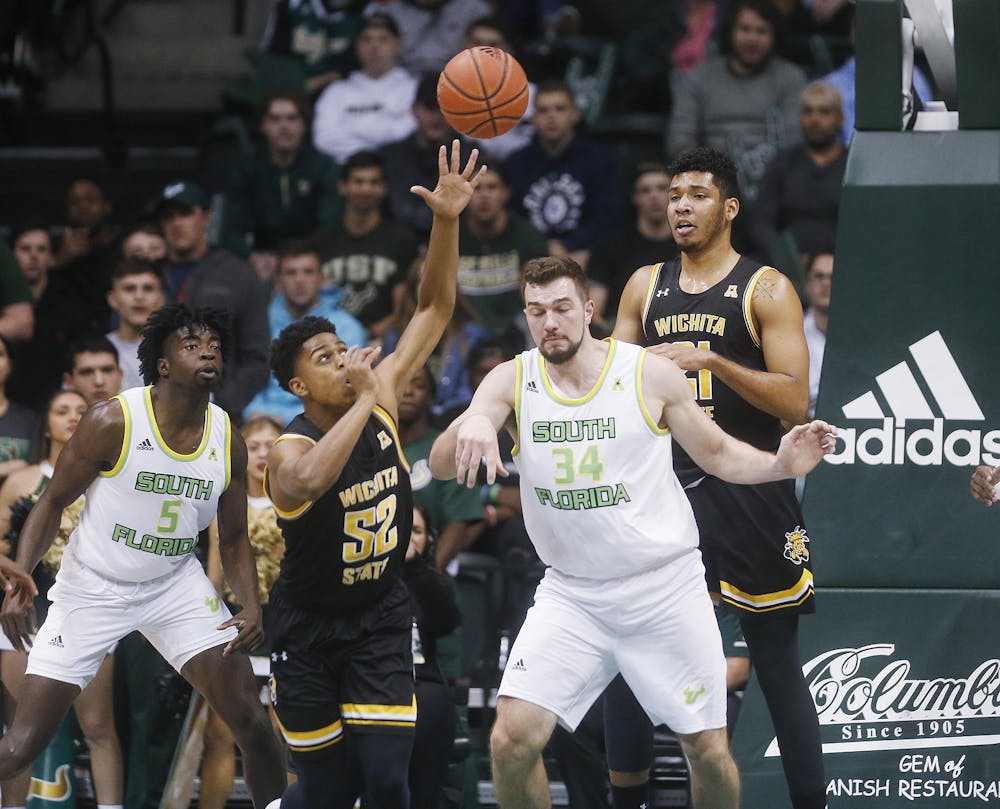The NCAA moved in the right direction in October by allowing athletes to make money off their likenesses. But it's not enough.
Considering the extreme difficulty for student athletes to go to the professional leagues and the injuries they sustain, they ought to be directly paid for their work. However, paying student athletes is difficult because of the concern that the distribution of salaries could become very unequal.
The best solution would be instituting a salary cap.
A salary cap is a limit on how much a sports team can spend on a roster. Almost every major North American sports league, such as the NBA, NFL and NHL, uses salary caps. The specific type of salary cap the NCAA should adopt is the hard cap used by the NFL, which does not allow teams exceed their cap under any circumstance, unlike the NBA's cap.
There are several benefits to the salary cap. First, it can tackle the issue of under-the-table payments that violate NCAA regulations. There have been reports of these types of violations in top-tier programs such as the University of Alabama, University of Mississippi and University of Michigan. While the allegations are difficult to prove, the practice is widely discussed by sports commentators.
Paying athletes with a salary cap would reduce under-the-table payments because it would allow the NCAA to monitor payments and can make it easier for it to investigate and prosecute schools that violate these rules.
Another benefit is that it would provide greater parity among sports teams, which would make NCAA sports more competitive. By restricting how much schools can spend on athletes, it would limit the number of successful recruits that dynasty schools can sign. Programs with historically strong recruitment such as Clemson University and Louisiana State University, for example, would have limits on their recruiting capacity, allowing for less established programs to attract top talent.
This would make collegiate sports more competitive and enjoyable for fans. And it would give more schools' athletic programs a chance to compete and win in national championships. Some fans of top-ranked legacy teams might complain, but most college sports fans would rejoice.
As college tuition has risen for most students, many have criticized large and expensive athletic programs that often don’t yield successful records or profits. A report from the Knight Commission on Intercollegiate Athletics found that Division I universities with football teams spent 7 times as much per athlete as they did per student in 2010. The figure for Division I universities without football teams was 3 times as much.
However, parity in sports could further justify the continuation of athletic programs and make them a worthy investment for students and fans.
It's also a better deal for the athletes. Students, especially from low-income backgrounds, could become more financially secure. Salaries would provide a useful safety net, especially considering that most athletes face poor chances of making it to the professional leagues and may graduate with deficits in transferable skills relative to other students..
The lack of pay is starting to chip away at the NCAA’s monopoly on talent. Notable potential NBA first-round draft picks have either gone abroad to play for a salary, as California high schooler LaMelo Ball did in 2019, or withdrawn from the NCAA, as James Wiseman of the University of Memphis and IU's own Romeo Langford did last year. It's an unfortunate pattern that damages the NCAA and the investments schools have made in their athletic programs.
With the recent success of IU football, now going into its third bowl game in five years, and the stagnation of IU men’s basketball, a salary cap could benefit both teams. For example, it could allow IU football to sign new athletes that would have been bound for Ohio State University and the University of Alabama, giving a chance for IU football to be a consistently ranked football school.
For IU basketball, it could increase parity of talent with rival programs. Maybe IU men's basketball could re-enter March Madness and even maintain an almost yearly presence in the bracket.
A salary cap system would benefit everyone involved in student athletics from athletes to fans to school administrations. If we're lucky, IU could be a basketball school and a football school.
Adi Giridhar (he/him) a senior studying law and public policy. He plans to go to law school and travel the world.






